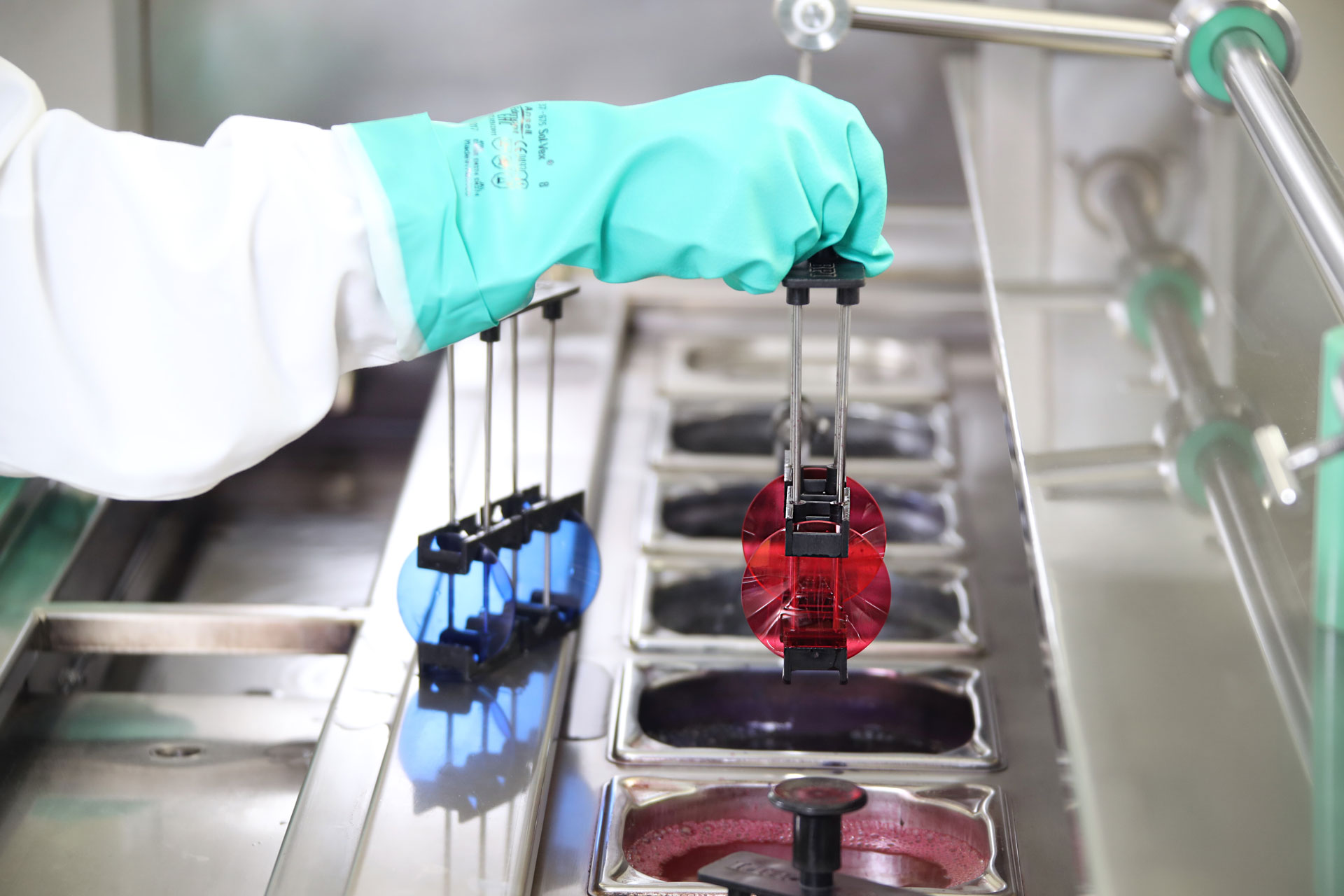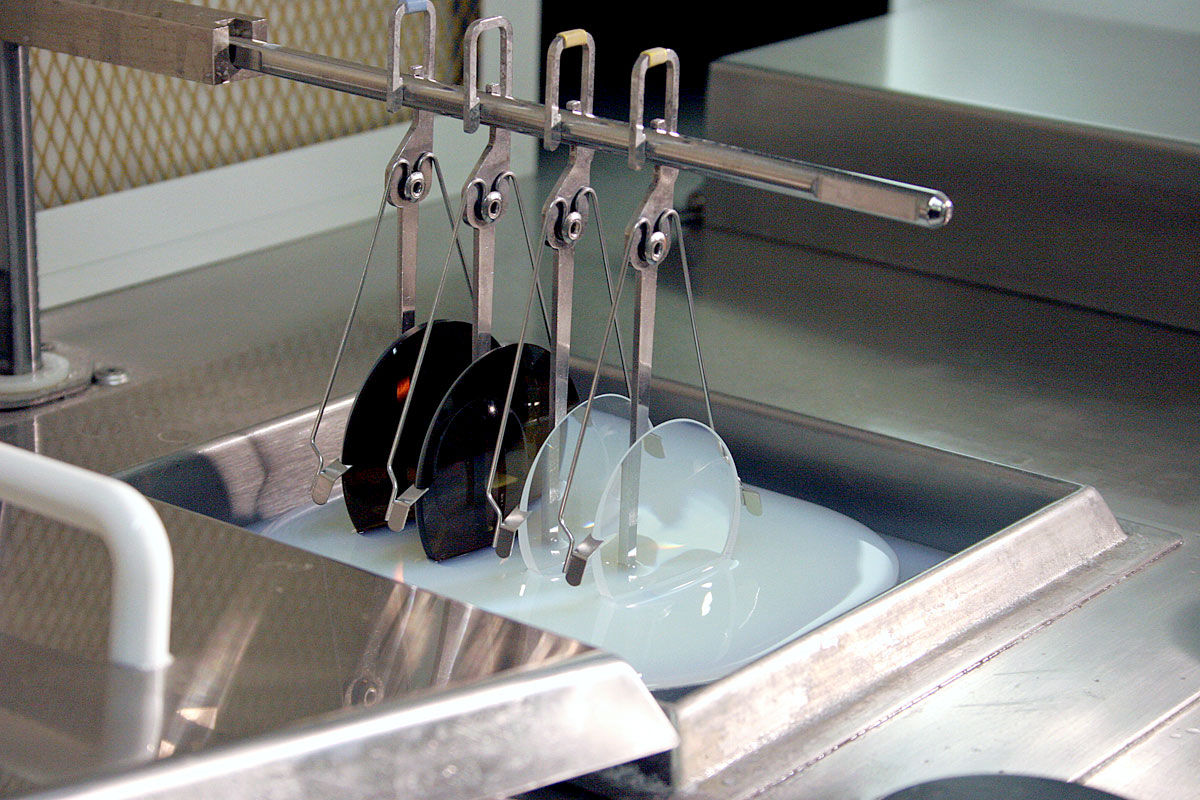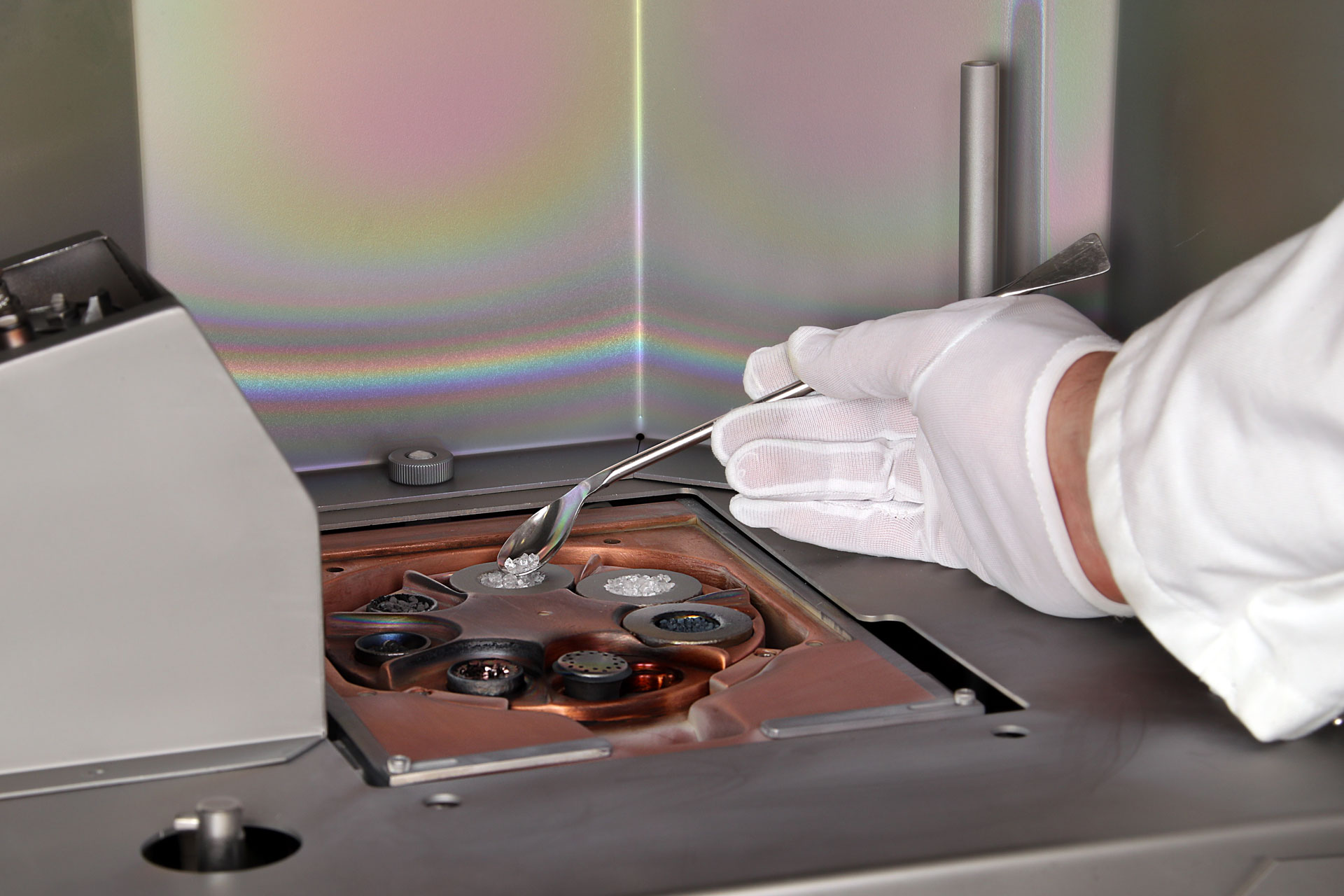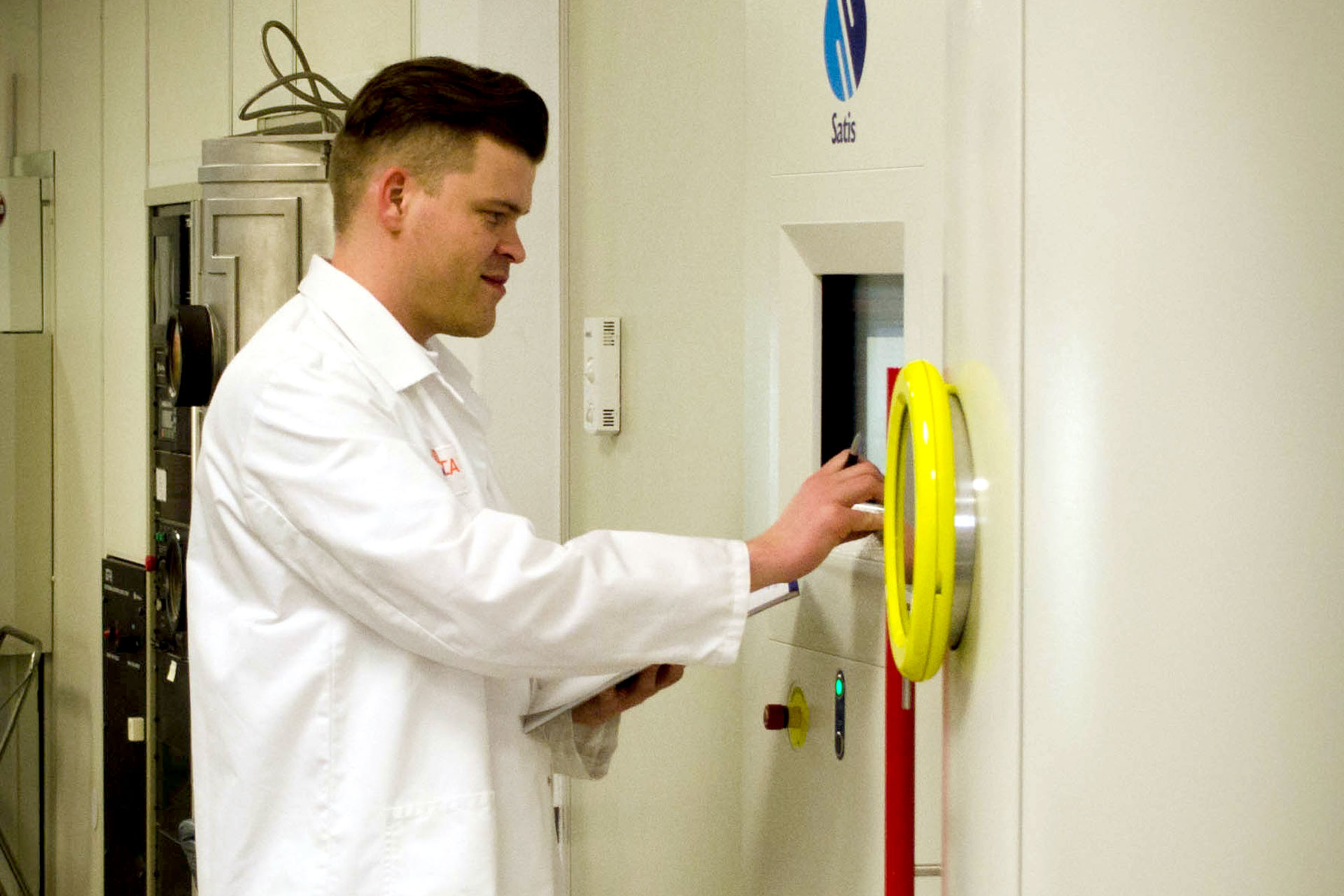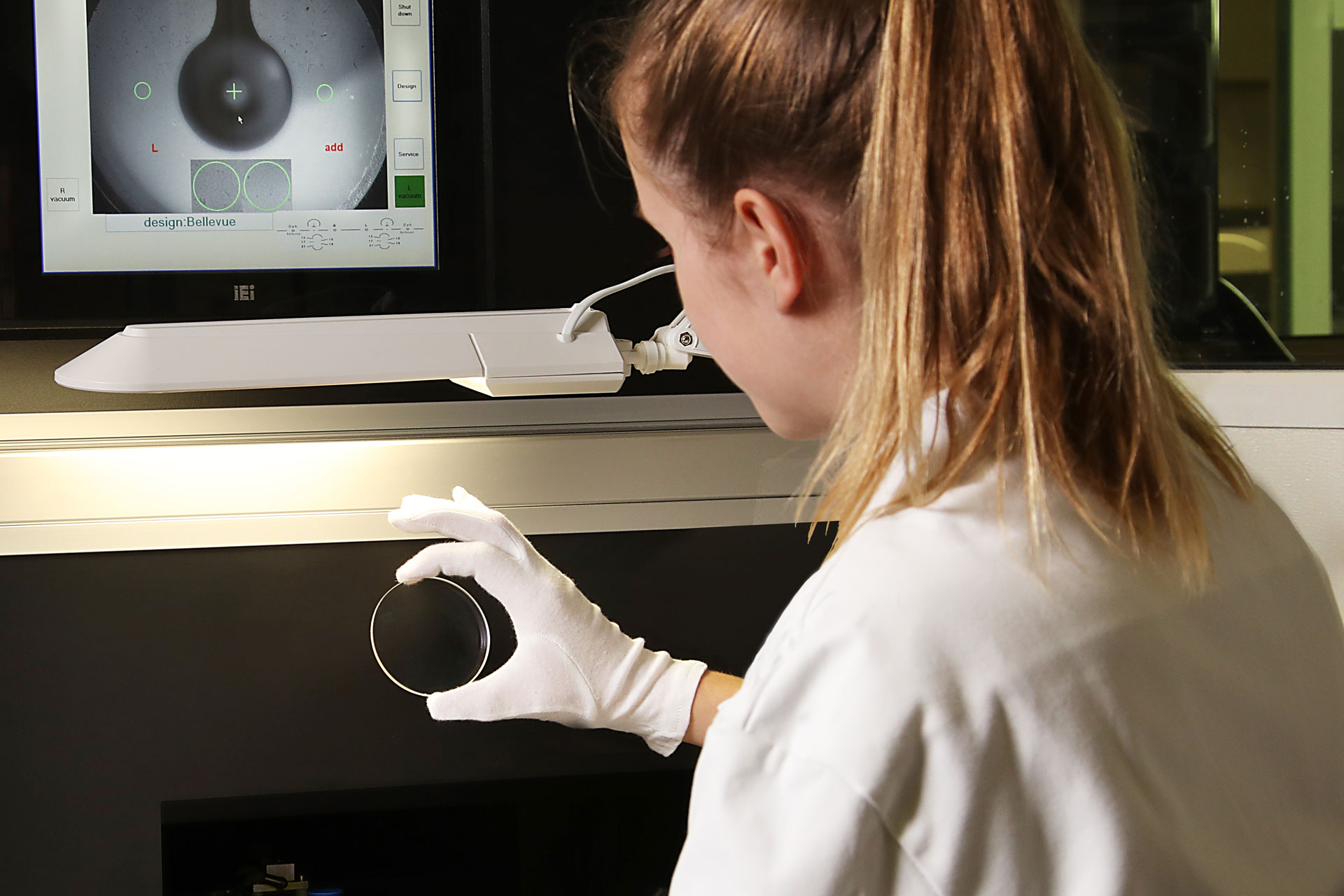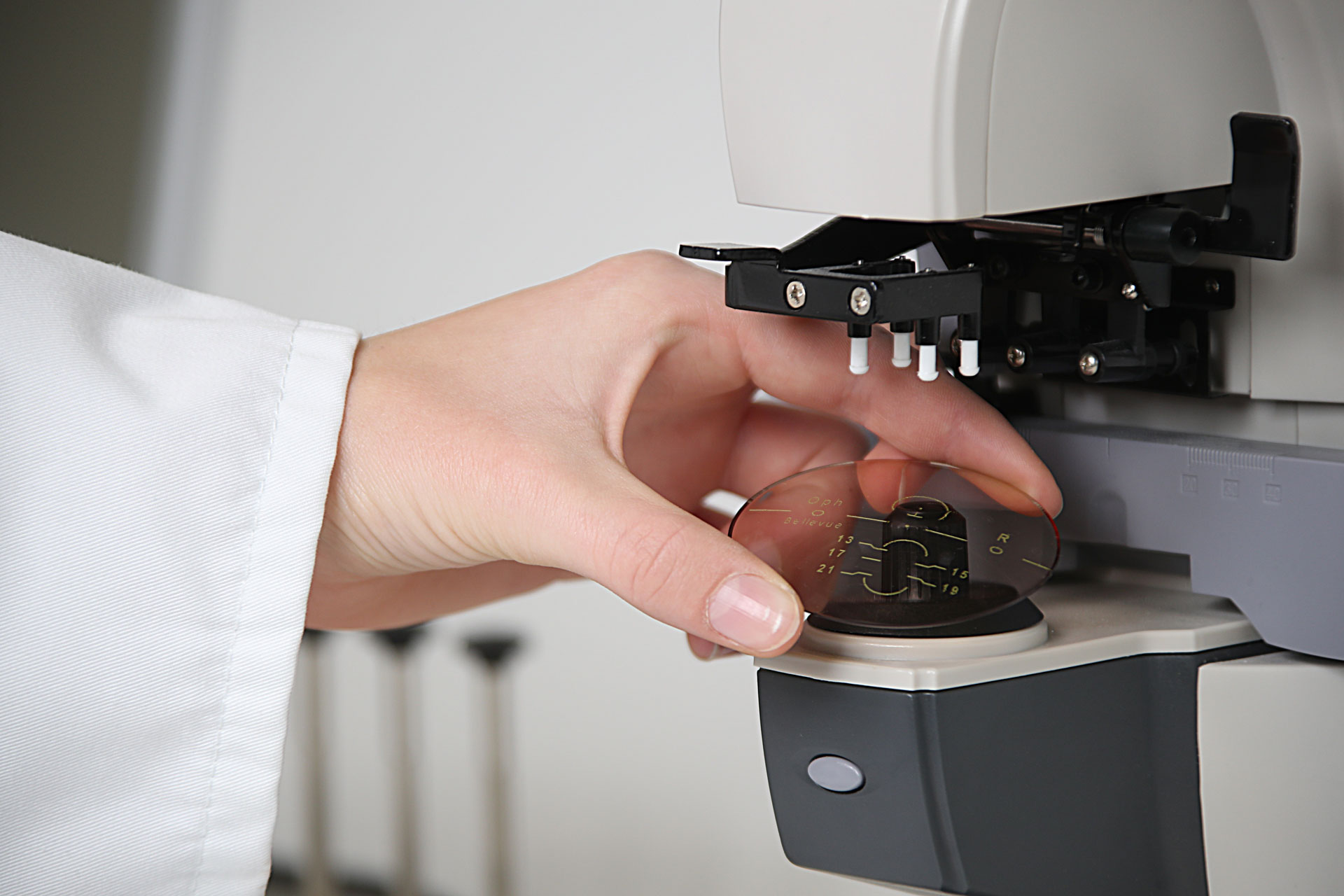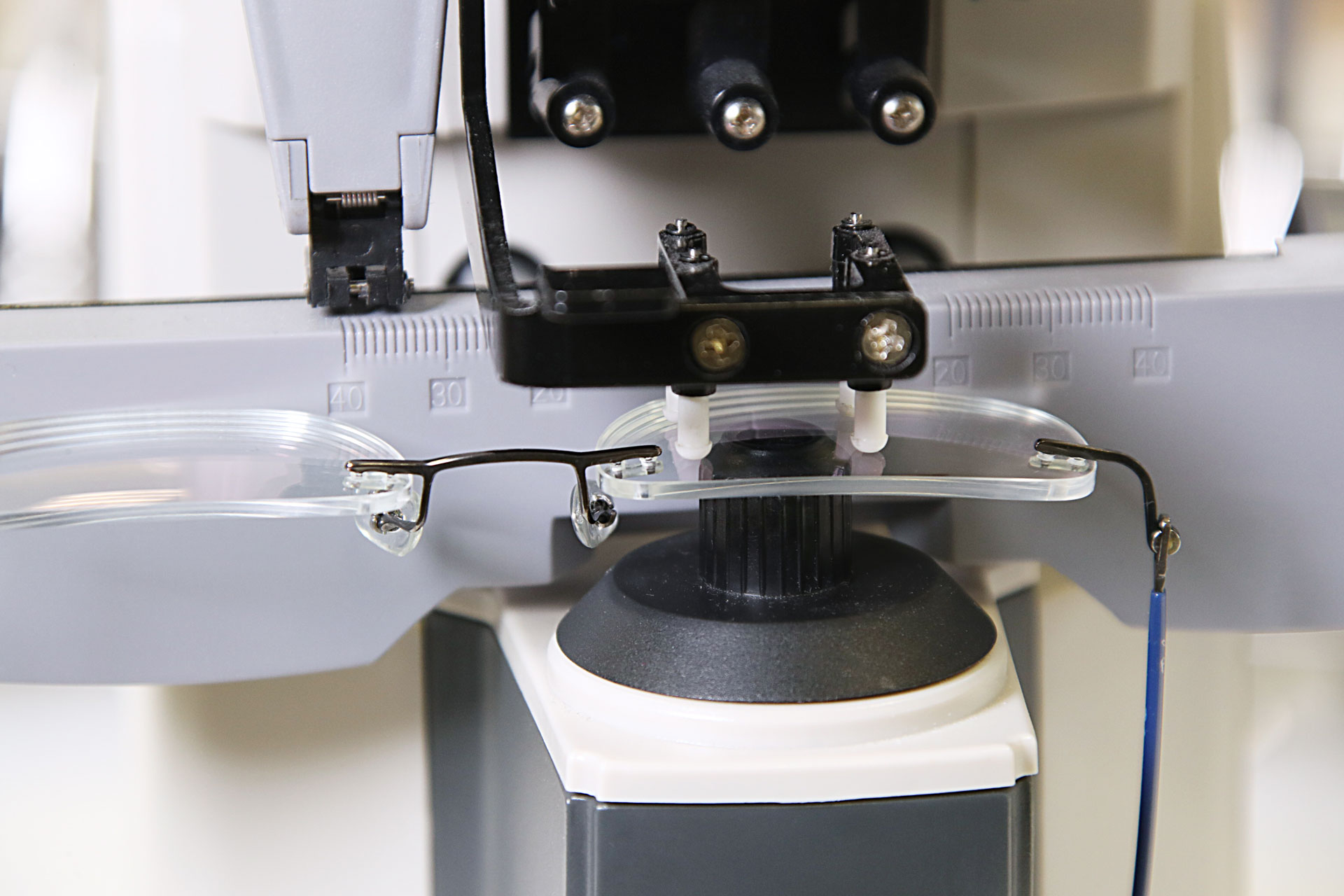Company tour
OPHTHALMICAs high-tech lenses are produced by 30 engineers and skilled specialists, some of whom have more than 30 years of experience in manufacturing spectacle lenses.
Right from the start we have put emphasis on the training of young professionals. Thus, 5 former apprentices work with our state-of-the-art machines and high-tech equipment.
The following company tour gives an insight into the considerable number of necessary steps to produce a perfect optical lens and therefore explains why a "Made in Germany" lens has its price.
Spectacle lens technology and manufacturing
As soon as the customer orders have been input in the ordering system and the complex calculation of the prescription surfaces is completed, the lenses are ready for the manufacturing part.

RX-prescription lenses production process - Freeform
OPHTHALMICA has been producing innovative freeform lenses in organic and mineral material for more than 10 years. The freeform technology enables the generating and polishing of spectacle lenses, which takes into account the individual data and parameters of the spectacles wearer.
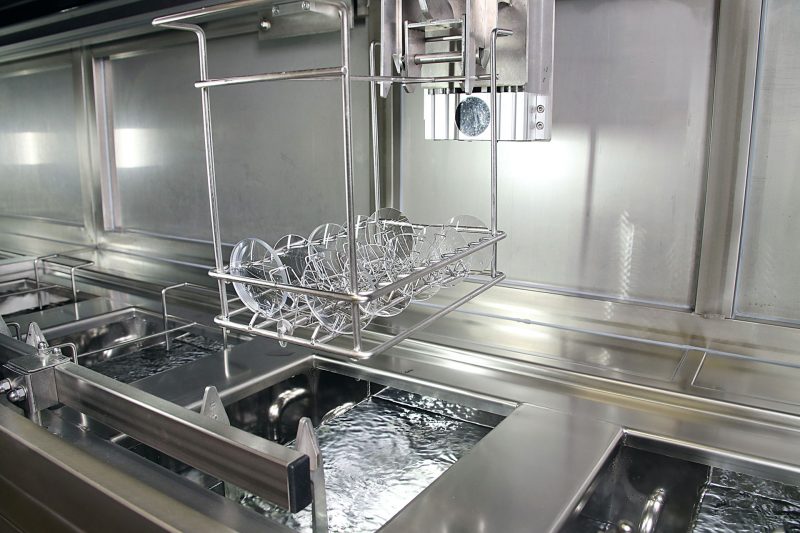
RX-prescription lenses production process - Traditional and mineral
Highly individual and special lenses (e.g. with very small diameters) are manufactured on conventional generators and polishing machines. OPHTHALMICA manufactures these special lenses both in organic and mineral material.
High-Vacuum Anti-reflection coating
The most complex and advanced technical step is the Anti-reflective (AR) coating of the lenses to reduce distracting light reflections and provide a more attractive appearance.
Ahead of vacuum coating of the lenses, a thorough cleaning of the lens is critical to ensure an excellent adhesion of the layers. The lenses go through an ultrasonic washing system to get rid of microscopic dirty particles on the lenses. To achieve a high-quality Anti-reflection and scratch resistance on the lenses, the cleanliness of the vacuum box coating system is also essential.
We apply several layers of glare reducing material on the spectacle lenses with layer thickness of typically 0.5 nm - 160 nm.
